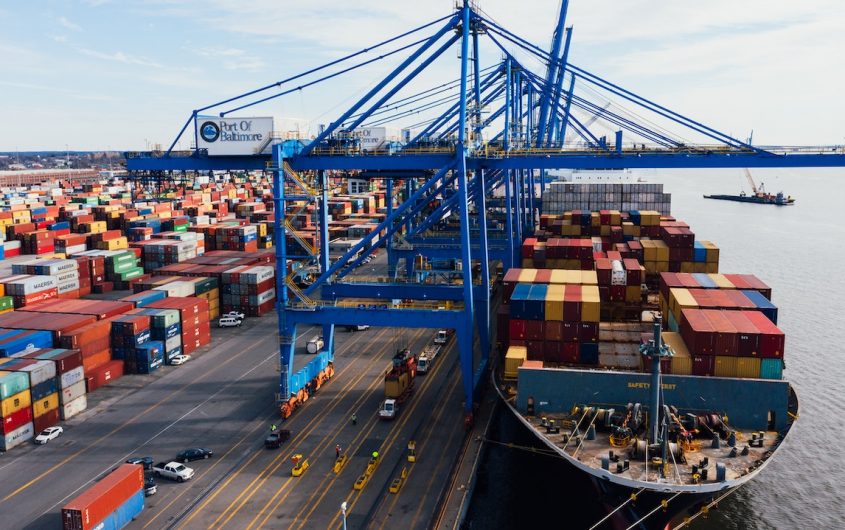
via Pexels
Trade Liberalization: De Jure and De Facto

Peter S. Rashish
Vice President; Director, Geoeconomics Program
Peter S. Rashish, who counts over 30 years of experience counseling corporations, think tanks, foundations, and international organizations on transatlantic trade and economic strategy, is Vice President and Director of the Geoeconomics Program at AICGS. He also writes The Wider Atlantic blog.
Mr. Rashish has served as Vice President for Europe and Eurasia at the U.S. Chamber of Commerce, where he spearheaded the Chamber’s advocacy ahead of the launch of the Transatlantic Trade and Investment Partnership. Previously, Mr. Rashish was a Senior Advisor for Europe at McLarty Associates, Executive Vice President of the European Institute, and a staff member and consultant at the International Energy Agency, the World Bank, UN Trade and Development, the Atlantic Council, the Bertelsmann Foundation, and the German Marshall Fund.
Mr. Rashish has testified before the House Financial Services Subcommittee on International Monetary Policy and Trade and the House Foreign Affairs Subcommittee on Europe and Eurasia and has advised three U.S. presidential campaigns. He has been a featured speaker at the Munich Security Conference, the Aspen Ideas Festival, and the European Forum Alpbach and is a member of the Board of Directors of the Jean Monnet Institute in Paris and a Senior Advisor to the European Policy Centre in Brussels. His commentaries have been published in The New York Times, the Financial Times, The Wall Street Journal, Foreign Policy, and The National Interest, and he has appeared on PBS, CNBC, CNN, NPR, and the BBC.
He earned a BA from Harvard College and an MPhil in international relations from Oxford University. He speaks French, German, Italian, and Spanish.
More than a year and a half into his administration, President Biden has so far followed through on a key campaign pledge: to forego new trade deals that open U.S. markets until investments in the country’s workers and infrastructure help make it better able to compete in international markets.
The White House has not expressed an interest in rejoining the Comprehensive and Progressive Agreement for Trans-Pacific Partnership (CPTPP), a trade agreement that in its original, twelve-member incarnation as the TPP was negotiated by the Obama administration and rejected by President Trump shortly after taking office. And it has also been silent about reviving the Transatlantic Trade and Investment Partnership (TTIP), another Obama-era deal that lost momentum just ahead of the 2016 presidential election.
Although both the TPP and TTIP were innovative given the wide range of issues they covered—regulatory cooperation, global rules for the behavior of state-owned enterprises, facilitating trade for small- and medium-sized firms, among others—they also included the most traditional aspect of trade negotiations: increased market access by reducing or eliminating tariffs.
Instead of pursuing free trade agreements, the Biden administration has worked with U.S. partners in Europe and Asia to create two new frameworks: the U.S.-EU Trade and Technology Council (TTC) and the fourteen-nation Indo-Pacific Economic Framework (IPEF). Rather than tariff reduction, they are mainly focused on supply chain resilience, digital economy rules, decarbonization, foreign investment screening, and export controls.
The Biden administration’s concerns about trade liberalization are not unfounded. Since its launch in 1995, the World Trade Organization’s rules have not been updated to account for the rise of China’s state capitalist economy, the threat of climate change, or digitalization. Ideally, further liberalization in the multilateral context of the WTO would occur after—or at least alongside—a reform of its rules to produce more equitable results for the United States and other high-standard market economies like the European Union.
Both the TTC and IPEF are consistent with the logic of globalization even if their effect will be to reorganize who trades with whom.
But even if the White House has a point about the (temporary) risks of trade liberalization, it is important to remember that there is more than one way to increase market access for trading partners. Agreeing to low or zero tariffs—de jure liberalization—is the most obvious way and the one with the longest track record. But both the U.S.-EU TTC and the IPEF with Asia include more indirect, less legally binding paths to increased trade—what could be called de facto liberalization.
To take one example, if the United States and its trading partners in the TTC and IPEF agree to new rules for supply chains governing their security, climate impact, and respect for human rights they perforce are going to trade more with each other and less with countries that do not meet these requirements. They will do this even if tariffs stay the same because other markets will be off limits and the imperative to grow the economy through trade will remain. Put another way, both the TTC and IPEF are consistent with the logic of globalization even if their effect will be to reorganize who trades with whom.
But what explains the Biden administration’s preference for de facto over de jure trade liberalization? The risks to opening markets through tariff cuts seem particularly manageable with the European Union, whose policies present no systemic challenge to the U.S. economy and its workers.
One answer could be politics. A future deal to reduce tariffs would lead Congress to try to pass Trade Promotion Authority to structure legislative-executive relations during the negotiations phase and then require it to approve any trade agreement that the administration reached. Given that twin hurdle, the de facto approach may have staying power.








